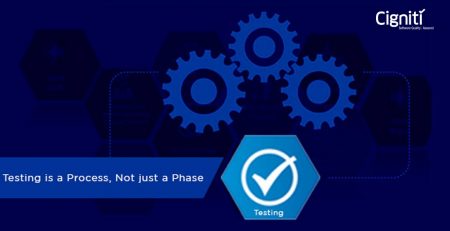Why do you need Software Testing Metrics?
|
Listen on the go!
|
In recent years, businesses have raised their expectations for development projects, cutting back financial resources and at the same time demanding shorter production cycles. Also, with increasing business and margin pressures, the projects are required to be accomplished in lesser amount of time with fewer people, often leveraging automation. This translates into developers and testers leveraging every opportunity to effectively manage the quality of their product or bear the risk of releasing software that fails the user expectations.
Because of the heightened importance being assigned to quality of applications, it is critical to not just have quality testing teams in place but also to have a defined way of measuring goals & efficiency of the test teams. This tracking of goals is achieved with software testing metrics. Good software testing metrics are specifically important as they encapsulate metrics that measure effectiveness and help gauge the progress, quality, and health of a software testing effort. Moreover, carefully defined metrics can aid in improving enterprises or organization’s testing process and helps track its status from time to time. Today, it has also become important for test vendors to share metrics that exemplify productivity, efficiency, and effectiveness in conjunction with the business benefits of software projects.
Why do you need Software Testing Metrics?
Software Testing Metrics are useful for evaluating the health, quality, and progress of a software testing effort. Without metrics, it would be almost impossible to quantify, explain, or demonstrate software quality. Metrics also provide a quick insight into the status of software testing efforts, hence resulting in better control through smart decision making. Traditional Software testing metrics dealt with the ones’ based on defects that were used to measure the team’s effectiveness. It usually revolved around the number of defects that got leaked to production named as Defect Leakage or the Defects that were missed during a release, reflects the team’s ability and product knowledge. The other team metrics was with respect to percentage of valid and invalid defects. These metrics can also be captured at an individual level, but generally are measured at a team level.
Software Testing Metrics had always been an integral part of software testing projects, but the nature and type of metrics collected and shared have changed over time. Top benefits of tracking software testing metrics include the following:
- Helps achieve cost savings by preventing defects
- Helps improve overall project planning
- Facilitates to understand if the desired quality is achieved
- Enforces keenness to further improve the processes
- Helps to analyze the risks associated in a deeper way
- Helps to analyze metrics in every phase of testing to improve defect removal efficiency
- Improves Test Automation ROI over a time period
- Enforces better relationship between testing coverage, risks and complexities of the systems
Divisions of Common Software Testing Metrics
Some of the most common software testing metrics that can be used for both automation and for software testing in general are given below. These are useful in the broader spectrum of software testing.
The general software testing metrics are divided into the following three categories:
- Coverage: It refers to the meaningful parameters for measuring test scope and test success
- Progress: Deals with the parameters that help identify test progress to be matched against success criteria. This metrics is collected iteratively over time and measures metrics like Time to fix defects, Time to test, etc.
- Quality: is used to obtain meaningful measures of excellence, worth, value, etc. of the testing product and it is difficult to measure it directly
Some of the other Common Software Testing Metrics have been detailed below.
Coverage Metrics
The principle of coverage metrics is to communicate to all stakeholders about what is covered during formal testing. The dimensions include validation points to evaluate application in compliance with the requirements and weigh them by business quality. The two types of Coverage Metrics include:
- Designed Coverage = Designed Validation points / All estimated validation points
- Executed Coverage = Executed Validation points / All estimated validation points
Defect Identification Efficiency
This metric determines how defects are identified and created by evaluating the compliance with agile principles. The dimensions include the number of defects identified in different stages of software cycle and also the number of defects created in different stages of Software cycle.
Defect Prevention through Pareto chart
This is one of the important areas where we focus to minimize production leakage. Pareto Chart is one of the standard analysis techniques, used to identify the main types of defects that have been identified so far. Pareto uses the 80:20 rule to prioritize.
Test Coverage
This metric defines the total number of test procedures/total number of test requirements. This Test Coverage metric will indicate planned test coverage.
Test Effectiveness
Test effectiveness needs to be assessed statistically to determine how well the test data has exposed the defects contained in the product.
Defect Aging
Defect Aging metric provides an indication of the turnaround of the defect.
Current Quality Ratio
It determines the number of test procedures successfully executed (without defects) versus the number of test procedures. Current Quality Ratio metric provides indications about the amount of functionality that has been demonstrated successfully.
Cigniti Technologies: A New Perspective to Software Testing Metrics
At Cigniti, we look at software testing as a process that starts from the requirements gathering stage itself, rather than at the end of the development lifecycle. Accordingly, in addition to the above metrics, our test teams use software testing metrics relevant for every stage of testing. This ensures there are regular checkpoints which monitor, observe and measure the progress vs expected progress. We ensure software testing metrics measure process output and are linked to your business strategy and corporate goals.
To know more about the software testing metrics we use in our web application testing projects, feel free to drop us a line @Cigniti





Leave a Reply